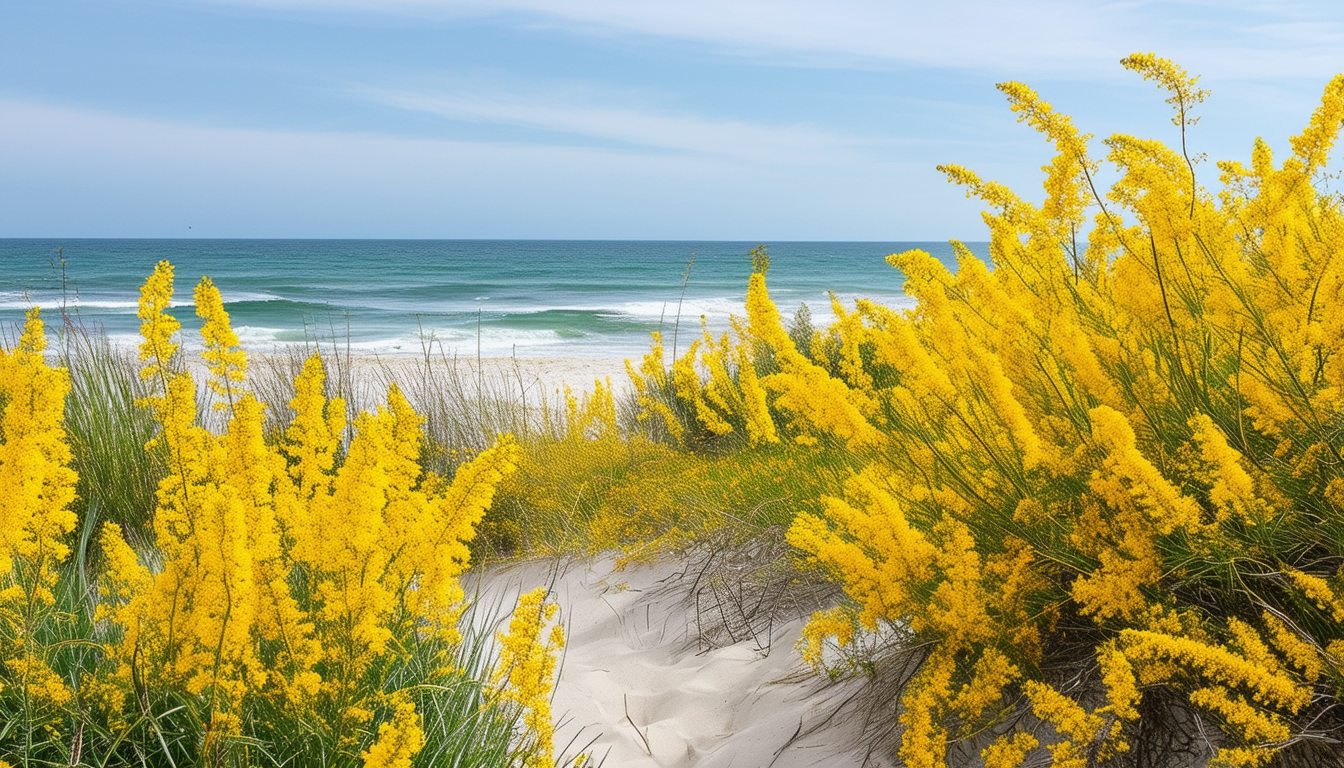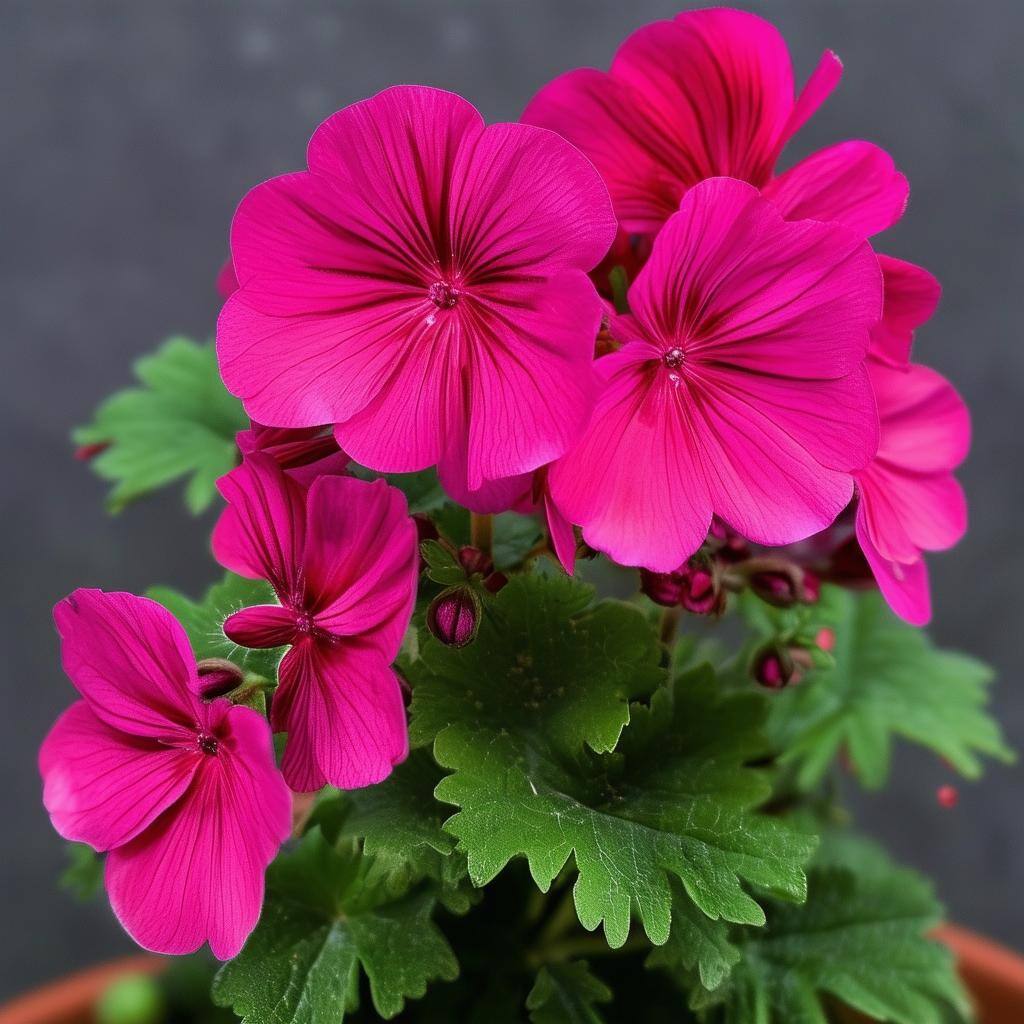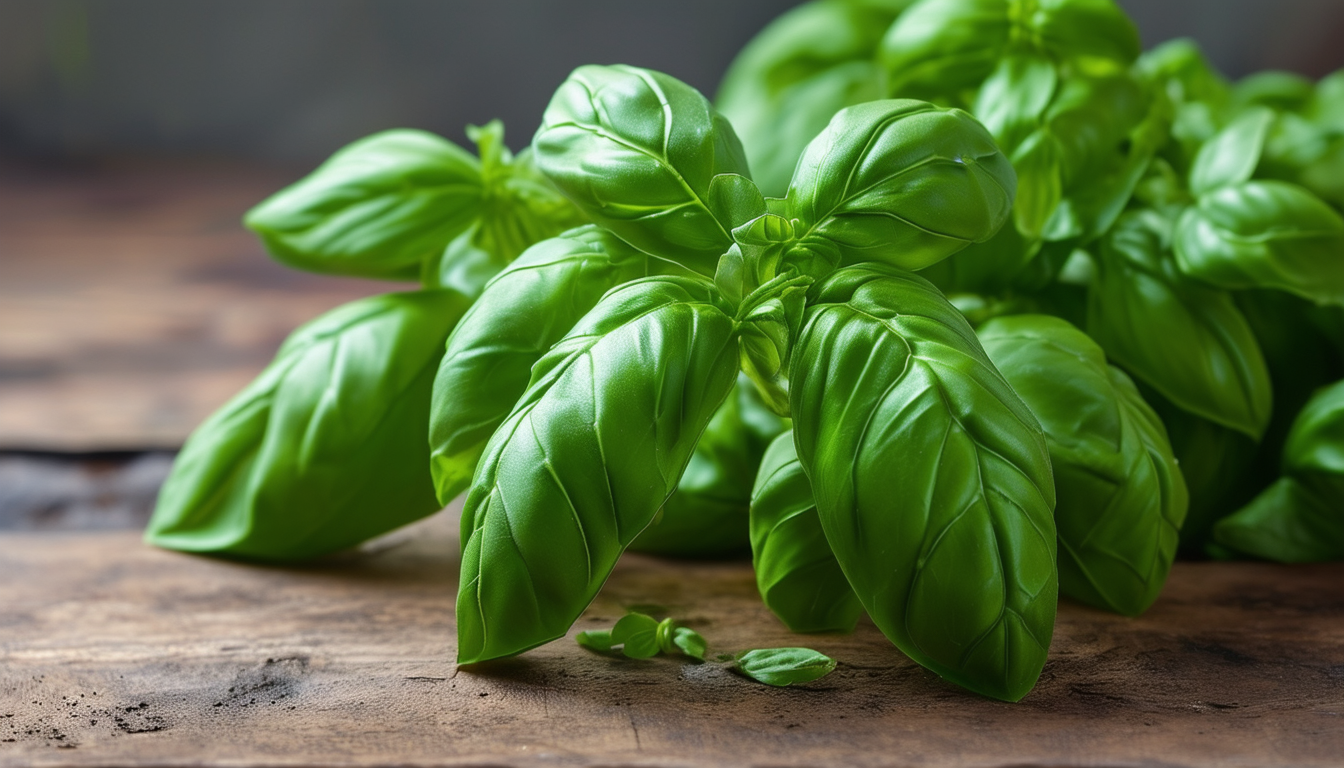
Transform your coastal garden into a vibrant paradise with the resilient and beautiful Seaside Goldenrod.
Why Seaside Goldenrod is Perfect for Coastal Gardens
Seaside Goldenrod (Solidago sempervirens) is a hardy perennial that thrives in coastal environments. Its resilience against salty air and sandy soils makes it an ideal choice for seaside gardens. The plant boasts bright yellow blooms that add a splash of color from late summer to fall, making your garden look vibrant and inviting.
Additionally, Seaside Goldenrod is known for its ability to attract pollinators such as bees and butterflies, enhancing the biodiversity of your garden. Its deep root system helps to stabilize sandy soils, making it not just a beautiful addition but also a practical one for erosion control.
Choosing the Right Location for Seaside Goldenrod
When selecting a spot for your Seaside Goldenrod, opt for an area that receives full sun to partial shade. The plant thrives in well-drained soils, which makes sandy and rocky coastal soils an excellent match. Avoid areas that are prone to waterlogging, as excessive moisture can harm the roots.
Consider planting them in areas where they can serve a dual purpose, such as along walkways or borders, to take advantage of their natural ability to prevent soil erosion. With the right location, your Seaside Goldenrod will flourish and bring lasting beauty to your coastal garden.
Planting and Caring for Seaside Goldenrod
To plant Seaside Goldenrod, dig a hole twice the width of the root ball and just as deep. Place the plant in the hole, ensuring that the top of the root ball is level with the soil surface. Fill in with soil and water thoroughly to settle the roots. For best results, plant in early spring or fall.
Once established, Seaside Goldenrod requires minimal care. Water the plants during prolonged dry spells, and consider mulching to retain soil moisture and suppress weeds. Deadheading spent flowers can encourage more blooms and prevent self-seeding if you prefer to control its spread. Fertilizing is generally unnecessary, as these plants thrive in nutrient-poor soils typical of coastal regions.
Benefits of Adding Seaside Goldenrod to Your Garden
Adding Seaside Goldenrod to your garden offers numerous benefits beyond its aesthetic appeal. Its deep roots help stabilize soil, reducing erosion and promoting healthier coastal ecosystems. The plant's flowers provide a late-season nectar source for pollinators, supporting local wildlife and biodiversity.
Moreover, Seaside Goldenrod is a low-maintenance plant, requiring minimal watering and care once established. Its resilience to salty air and poor soil conditions makes it a reliable choice for gardeners looking to add color and life to challenging coastal areas.
Creative Landscaping Ideas with Seaside Goldenrod
Seaside Goldenrod is versatile in landscape design. Use it as a striking border plant along pathways or garden edges, where its bright yellow flowers can create a cheerful and welcoming atmosphere. Its height and bushy nature make it an excellent backdrop for shorter, complementary coastal plants like Beach Grass and Lavender.
For a more naturalistic look, consider creating a wildflower meadow with Seaside Goldenrod interspersed with other native coastal plants. This not only adds visual interest but also promotes a healthy and diverse ecosystem. Whether you prefer a structured garden or a more relaxed, natural setting, Seaside Goldenrod can be a valuable addition to your coastal landscape.



